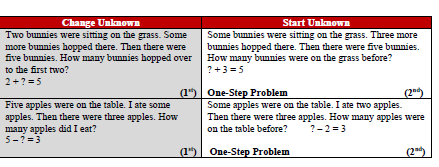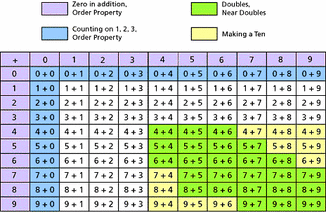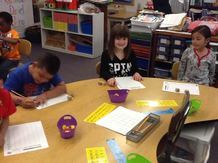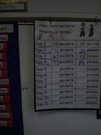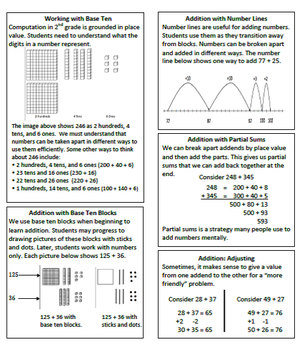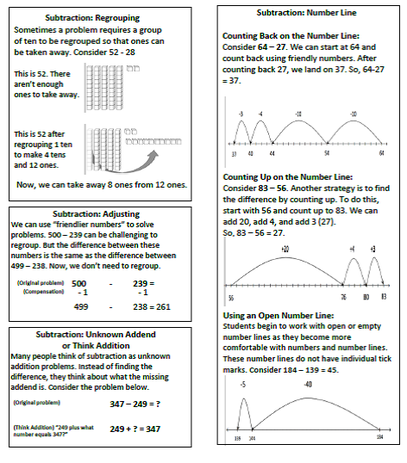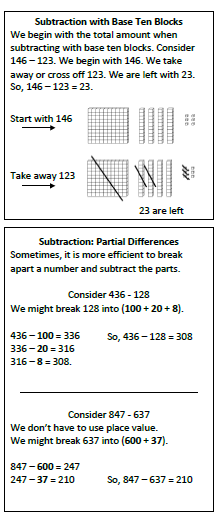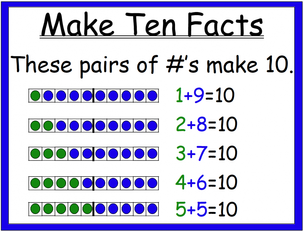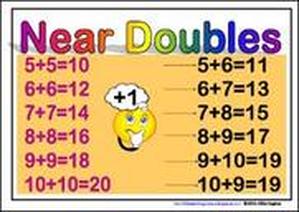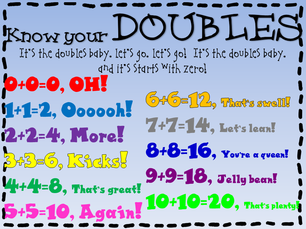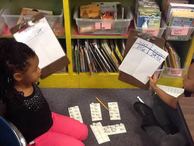
You can learn about what mathematical ideas your child is working on by exploring the resources found in each of the nine weeks below. You will find video clips, examples of student work, and games/activities to try at home!
Second Grade Unpacking Document
Major Work Standards
Videos of Second Grade Discussions
Second Grade Parent Information from NCDPI
Second Grade Unpacking Document
Major Work Standards
Videos of Second Grade Discussions
Second Grade Parent Information from NCDPI
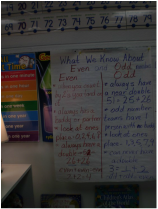
First Quarter
During the first nine weeks, your second graders will be focusing on extending an understanding of the counting sequence beyond 120. They will develop ideas about quantity, decomposition of numbers and addition and subtraction within 100. This is the first time students will encounter ideas about money and use skip counting to make sense of the value of coins. They continue to work on telling time including time to the nearest five minutes. They will review the problem types from first grade and encounter word problems with unknowns in all places in an equations. During the second part of the quarter, they will develop ideas about 2-dimensional and 3-dimensional shapes in different ways, and how to sort, categorize, name and think about the relationships between them. Fluency with addition and subtraction combinations is another focus during this nine weeks.The use of the number line and the solving of length model problems will begin in this first quarter and continue through second grade. (See examples of strategies below and the Unpacking Document link above) Videos Student Work Samples Word Problem Type Chart Books to Read Grouchy Ladybug Clocks, Clocks and More Clocks Games Collect 25 Cents Game Plus One or Two Bingo Make Ten Tens Go Fish 100 Chart for Guess My Number Hundreds Chart Games Online Games Coin Game Okta's Rescue Examples of Math Concepts Example of a time lesson Example of a money lesson Examples of student solution strategies: This chart shows the number relationships that students will notice as they become fluent with the addition combinations ( a goal by the end of second grade). Students will use the strategies noted below. |
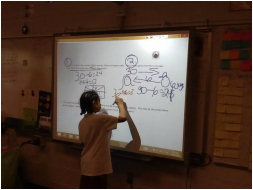
Second Quarter
During this second nine weeks, your second graders will extend the work on composition of numbers – including work with the place value system and the operations of addition and subtraction. Additionally, the work focuses on developing the students’ understanding of place value with specific emphasis on the structure of 100. Students apply their understanding of place value as they continue to refine their strategies for adding and subtracting 2-digit numbers and explaining why addition and subtraction strategies work using place value and the properties of operations.Later in the nine weeks, second graders will work with adding and subtraction larger numbers (within 1000). (Note: the traditional US algorithm for addition and subtraction is not studied until fourth grade. This allows students the opportunity to solidify base ten structures with accessible strategies). Classroom routines continue to support the standards for geometry, time and money.Your child will develop an understanding of a new problem type with unknown change (see the table below).During this quarter, your child will develop generalizations about what happens when you add even and odd numbers. The development of fluency with the basic addition and subtraction combinations continues. Videos Students Share Strategies for Solving Problems Books To Read Games Counting by Fives Grouping and Grazing Game Shape Tools Patterns to 100 and Beyond |
|
Third Quarter
During this third nine weeks, your second graders will extend the work on the operations of addition and subtraction, extending their range of numbers to add and subtract within 1000 using strategies based on place value. They will also explore foundational fraction concepts by partitioning squares, rectangles, and circles into two, three, and four equal pieces. Students will describe these shares as half, half of, third, third of, fourth, fourth of (formal fraction notation such as 1/2, 1/4, etc. is not introduced until 3rd grade). Students will also recognize that equal shares of identical wholes need not have the same shape. |
Fourth Quarter
|
Solution Strategies
